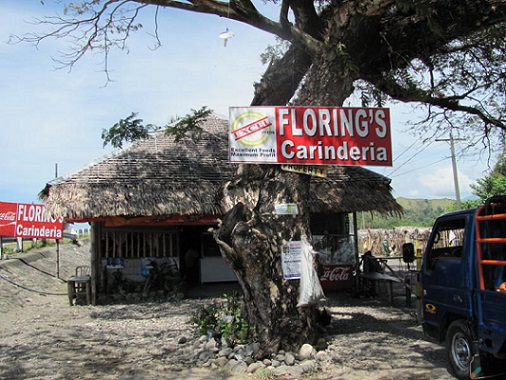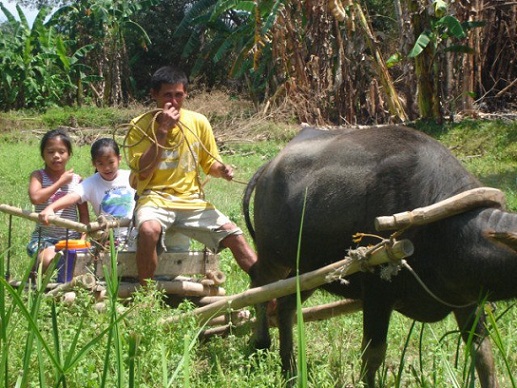Looking for places to visit this summer?
Try the not-so-trodden paths. Try the perfumed island of Nogas in Antique.
Located in the northern most part of Antique, Nogas Island is 24 hectares of deep and lush forest. If you want to explore it, better get a guide familiar with the island. It’s easy to lose one’s way exploring the inner part of the islands because of the lack of pathways.
When we visited the island a few years ago, we met an enterprising policeman assigned to the area. He built a boat and served as guide to visitors of the island. He knows the island like the back of his hand. He can tell the bird’s name just by its chirping.
Nogas is about 20 minutes by boat from the town of Anini-iy. From Iloilo, Anini-iy is about two hours by land.
If you are taking a public transport, you take the bus or van from Iloilo. Tell the conductor to drop you off at the junction where there are jeepneys going to Anini-iy.
The fragrant smell of calachuchi flowers greet you upon stepping into the island. You can also hear the vibrant chirping of the birds. A birdwatcher in our group was so fascinated by the island because of the various varieties of birds that she spotted.
In visiting nature’s paradise, resist the urge to get the rare plants, stones and corrals that you see. A companion who got separated from us, lured by the beauty of a plant and the beautiful sound from behind the trees, lost her way. The policeman guide had to go back and search for her.
Advice to visitors: Bring out only what you brought into the island. Don’t leave you garbage. Don’t raid the island’s gems.
If you are going to Boracay from Iloilo via Antique (that’s about five to six hours by bus), you will be passing about 10 or more bridges. One of the long bridges in Antique that you will be passing is Cangaranan bridge in Barangay Ilaures in the town of Bugasong.
 At the foot of Cangaranan bridge is Floring’s, a nipa hut restaurant that serves delicious chicken adobo.
At the foot of Cangaranan bridge is Floring’s, a nipa hut restaurant that serves delicious chicken adobo.
Writer Alex de los Santos, in an article for VERA Files/Yahoo, described Floring’s as “ the refuge of many hungry travelers traversing the national highway through Antique, one of the provinces that comprise the island of Panay, the others being Iloilo, Aklan, and Capiz.”
De los Santos said, “Customers come by the busloads or delivery trucks. Salesmen and their crew drop by for breakfast or lunch. Dusty workmen in motorcycles stop by for a plateful. Even Antique’s well-heeled set would park under the shady acacia and grab a meal at Floring’s. On Sundays, they deem it necessary to call for reservations.”
De los Santos wrote why Floring’s click when in fact, it offers nothing but native chicken adobo. He said, “It was only recently that they added native chicken tinola (chicken broth with green papaya and pepper leaves) in the menu. Its chicken adobo is deliciously cooked red-orange in its own fat and achuete sauce, garnished with tapering siling labuyo or chilli peppers. The serving is nothing fancy: the chicken cutlets are unceremoniously heaped on a plastic plate, but they disappear no sooner than they are served.”
De los Santos said the eatery used to have a unique selling strategy: “It would serve as many pieces of chicken at the table, and charge the costumers only for what they ate. They would usually consume every piece served anyway, and even ask for extras. This strategy, and its folksy ambiance, contributed to Floring’s homey, rustic style that endeared the joint to its clients.”
De los Santos said the story of Floring’s is more than just delicious chicken adobo. Founded by Florinia Jalipa in 1970,it started out as one of those makeshift eateries at Ilaures junction, where the national highway branches out to mountainous Valderrama town.
“At that time, trucks and travellers were few, so they operated on cook-as-you-order basis. Its costumers had to wait until the adobo is cooked. Sometimes, if it runs out of dressed chicken, the wait starts with boiling water with which to scald the chicken still breathing its last.
“From her Floring’s earnings, Jalipa was able to send her daughters, nieces, and grandchildren to school. Two of her daughters, Charlotte and Judith, help her in the restaurant alternating as cashier and cook.”
If you stay a little longer in Antique, discover the joys of barrio living like riding the carabao-driven carosa.

